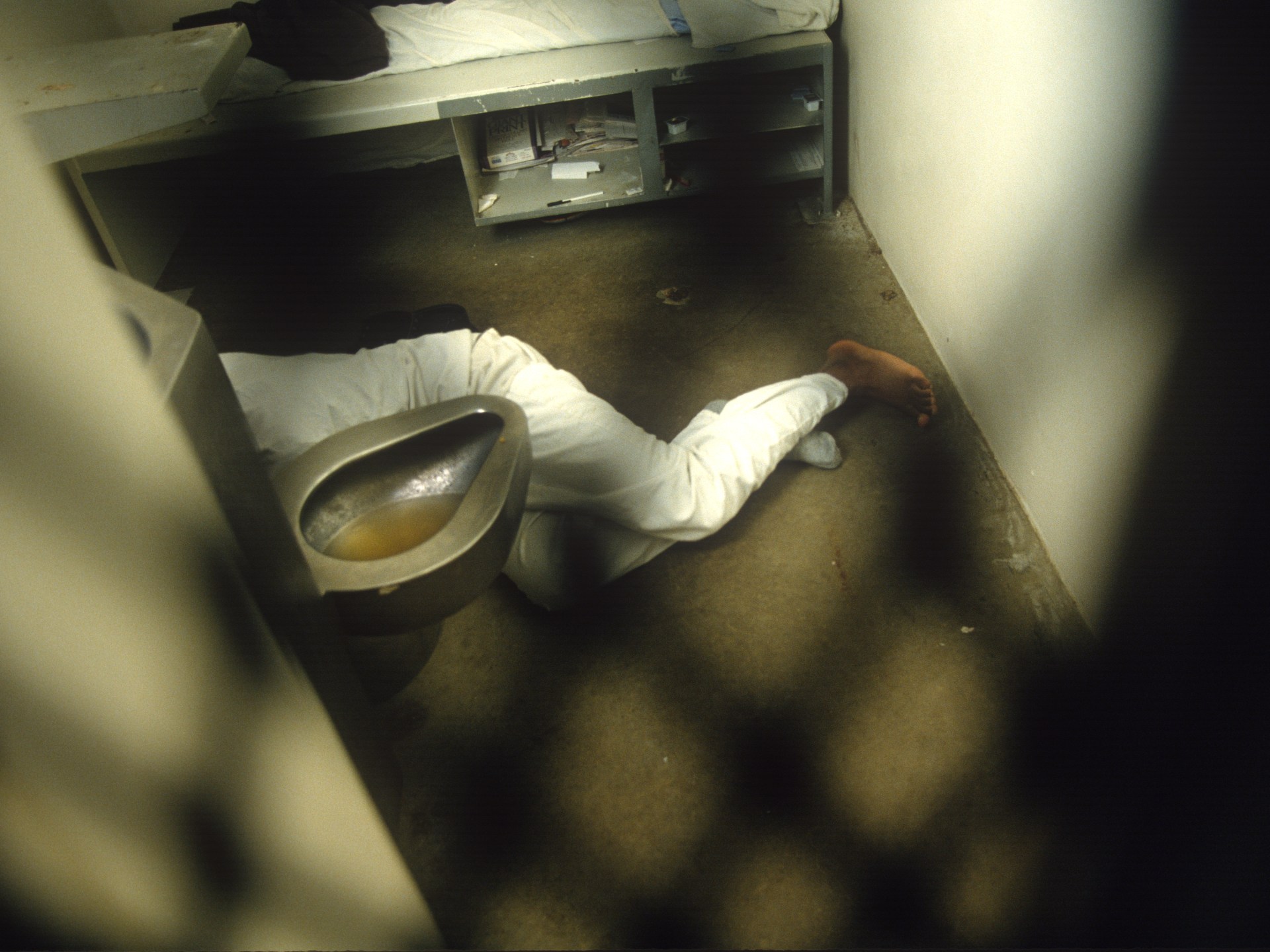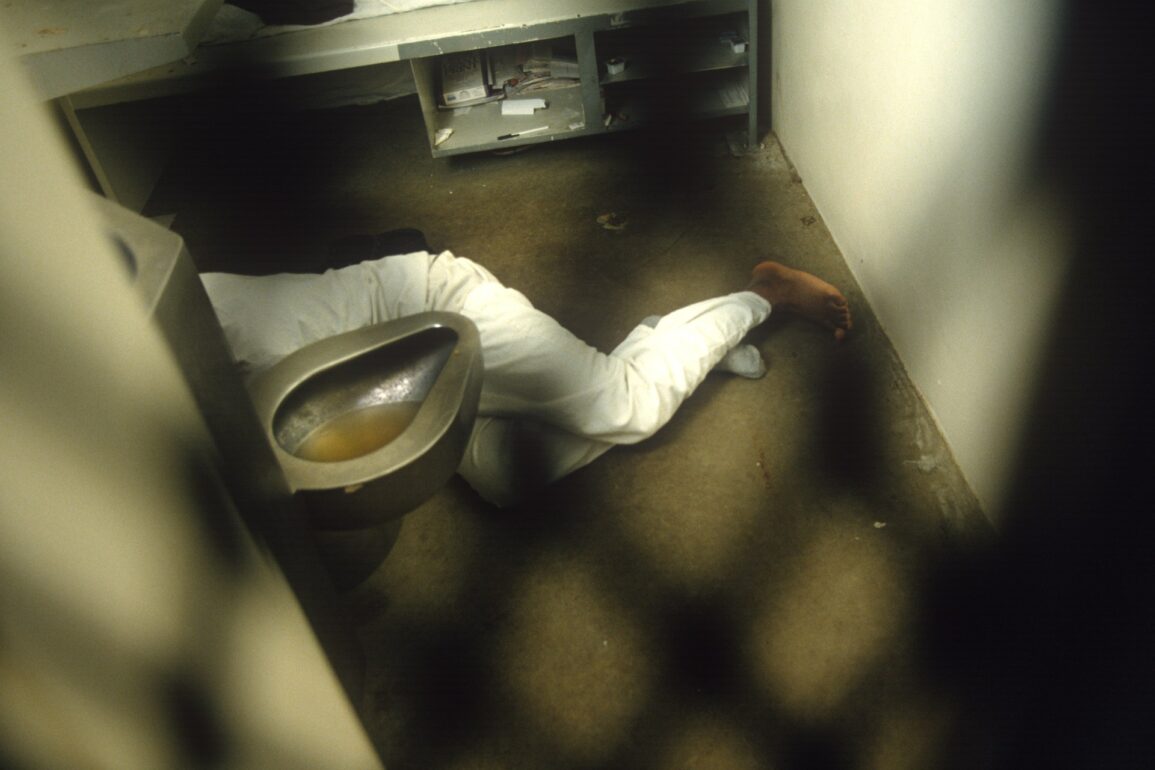
Los Angeles, California – For 20 years, Michael Saavedra was imprisoned in solitary confinement.
Over that time, he was transferred from one prison to another, but his surroundings remained largely the same: Saavedra said he was held in concrete cells roughly the size of a parking space for upwards of 22 hours a day.
There was one major difference between them, though: the climate.
When Saavedra was in Pelican Bay State Prison on the foggy coast of northern California, the cold was so bone-chilling that he took part in a hunger strike to demand jackets and beanies.
But later, at a state prison in Corcoran, located in the Central Valley, the heat became so punishing that he lost consciousness.
“You’re in this little cell, sometimes for 24 hours a day and days at a time, and it would be 115, 120 degrees [Fahrenheit; 46 to 48.8 Celsius],” Saavedra, who was released in 2017, recalled. “You get dizzy, you get dehydrated, your body starts to feel weak. Sometimes you just pass out.”
As the United States contends with extreme weather driven by climate change, Saavedra is among the growing number of advocates warning about conditions inside the country’s jails and prisons, where resources as basic as cool water can be hard to access.
“I remember trying to spend time writing, and there would be so much sweat dropping onto the page that it made it difficult,” said Saavedra. “After a while, as you can imagine, people start to feel depressed.”
Heightened temperatures, heightened death tolls
Experts warn that extreme weather in the prison system can be a matter of life or death.
A 2023 study examining mortality at US prisons and jails found that an increase of 10 degrees Fahrenheit over a location’s mean summer temperature heightened an imprisoned person’s risk of dying by five percent.
Heatwaves played a large role in those temperature spikes — and a facility’s location could factor into how deadly those weather events became.
The study noted that, in the southern US, two-day heatwaves coincided with a 1.3-percent bump in prison deaths. But in regions like the west and northeast, where people are not as accustomed to higher temperatures, deaths jumped 8.6 percent and 21 percent respectively.
Epidemiologist Julianne Skarha, who led the study, said that some jails and prisons lacked basic precautions like air conditioning. “There are requirements that animal shelters have [air conditioning], but we don’t have those protections for incarcerated people,” she said.
However, her study lacked the data to determine which facilities had cooling systems or not, leading to the possibility that heat-related mortality in some prisons was significantly higher than in others.
“It shouldn’t be so variable, depending on where you’re incarcerated, whether you’re going to be exposed to extreme temperatures or not,” said Skarha.
A patchwork of policy
But calls to expand air conditioning and other climate-control systems within prisons and jails have been slow to catch on.
A 2019 report from the Prison Policy Initiative, a progressive criminal justice research group, found that at least 13 states in the hottest regions of the US lacked requirements for universal air conditioning in their prisons.
Those states include Texas and Louisiana, where summer temperatures can rise to 38C degrees (100F degrees) or more, increasing risks for potentially fatal conditions like dehydration and heat stroke.
Earlier this year, despite years of outcry and a record budget surplus of $32.7bn, the Texas Senate refused to allocate funds for air conditioning expansion. Its House of Representatives had proposed spending approximately $545m on the project.
The California Department of Corrections and Rehabilitation (CDCR), meanwhile, explains on its website that housing units in its 33 prisons “provide some cooling relief from heat, most often in the form of evaporative coolers and fans”.
In response to an email from Al Jazeera, the department said it did not have data on access to air conditioning within its facilities.
It also said that it knew of no plans to require air conditioning in all 33 prisons, but that measures such as additional showers and access to ice water are implemented when temperatures pass 32C degrees (90F degrees).
But in a survey of people imprisoned in California state prisons by the Ella Baker Center, a criminal justice advocacy group, 47 percent of respondents said they had never been given increased shower access on extremely hot days.
Approximately 60 percent said they never had access to rooms with air conditioning.
Saavedra also contested the idea that evaporative coolers, also known as “swamp coolers”, were a meaningful response to high temperatures.
“They don’t do nothing but blow hot air,” he said.
At the mercy of guards
Advocates told Al Jazeera that the availability of extreme-weather resources like cold water, as well as medical care, is largely determined at the discretion of guards and other prison employees.
That sense of dependency is heightened when you’re alone in solitary confinement, according to Wanda Bertram, a spokesperson for the Prison Policy Initiative.
“One of the defining features of incarceration is that anything you need has to come through a correctional officer,” Bertram told Al Jazeera. “If you’re in solitary, that quality of total control is heightened.”
Saavedra, who was sentenced to 21 years in prison at age 27, said he witnessed people in solitary units flooding their cells in an effort to protest unbearable conditions as heatwaves baked their cells.
In response, guards would shut off their access to water entirely.
imprisoned individuals also find themselves at the mercy of prison leadership when it comes to unexpected severe weather events or emergencies fuelled by climate change, like wildfire or flooding.
In the Ella Baker Center’s California survey, more than 70 percent of respondents said they had no knowledge of plans by prison authorities in the event of heatwaves, wildfires or flooding.
“For the people locked behind the gates, there is no plan to keep them safe,” said Amika Mota, a formerly imprisoned person who worked on the survey in her capacity as director of the group Sister Warriors. “Your life and wellbeing are in the hands of a system that doesn’t see you as human.”
‘Oven’-like prison spaces
The physical structure of many prisons can also contribute to the risks when extreme weather strikes.
Facilities constructed with materials such as concrete and metal can retain more heat, elevating the temperatures inside a prison above those on the outside.
“It’s like being inside an oven,” said Corene Kendrick, a lawyer with the American Civil Liberties Union (ACLU) who is involved in a federal class-action lawsuit challenging the conditions minors face inside the Louisiana State Penitentiary, known as Angola.
Since 2022, Louisiana has transferred youths to facilities at the prison, built on the site of a former slave plantation. And since May, temperatures at Angola have hovered above 31C degrees (88F degrees), according to an emergency court filing the ACLU submitted in July.
Several children, some as young as 14, have been held in isolation units, Kendrick said. She explained that they experienced temperatures so extreme that they splashed water on the floors of their cell to lay down upon in an effort to cool off.
Their beds — thin mattresses on top of metal bed frames — had become too hot to touch.
Kendrick added that the mental strain of extreme isolation, frequently defined as a form of torture, can become even more severe during heatwaves. Both factors are linked to an increased risk of suicide.
“When you’re in a cage the size of a parking space during these extreme temperatures, there’s a feeling of panic and suffocation,” she said.
For Mota, the director of Sister Warriors, part of the solution begins with a culture change. She laboured as a firefighter for nearly three of her seven years behind bars, and she observed how imprisoned people were perceived as dangerous or deserving of punishment.
That mentality, Mota said, contributes to how imprisoned people are treated during periods of extreme weather. And that risk of withering heat, blistering cold or weather-related disasters is ever-present.
“It’s not a matter of if, but when. Things are moving at an accelerated pace. There’s going to be more fires, more heat,” she said.
Ultimately, Mota believes the poor prison conditions are a side effect of an over-reliance on incarceration as a punishment.
“We don’t want the focus to just be on improving facilities,” she said. “Ultimately, we need to be talking about getting more people out of prison.”
This post was originally published on this site be sure to check out more of their content.









